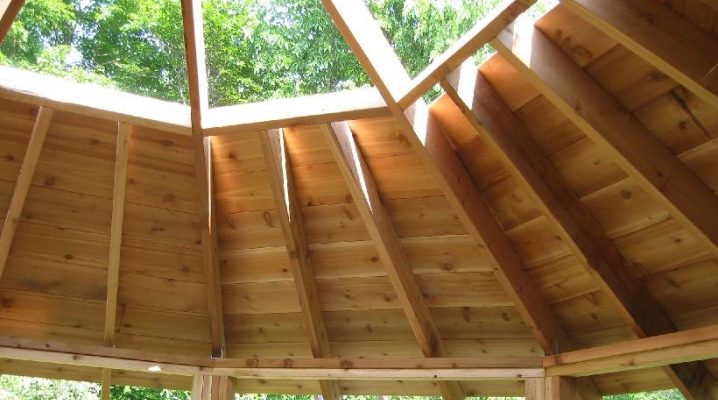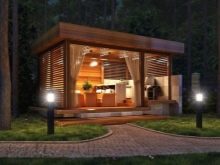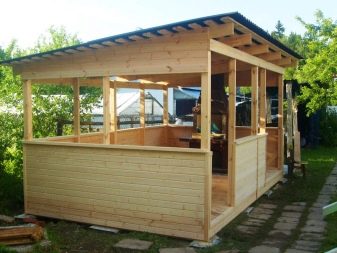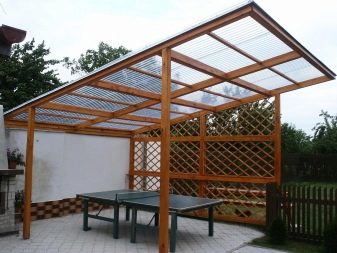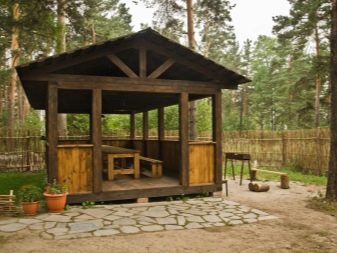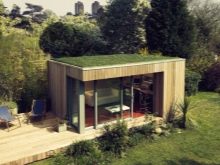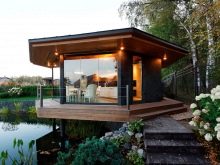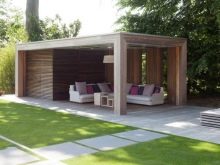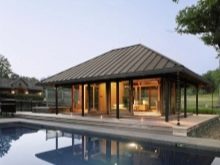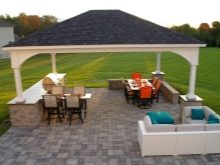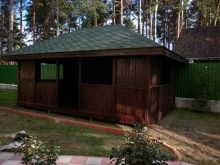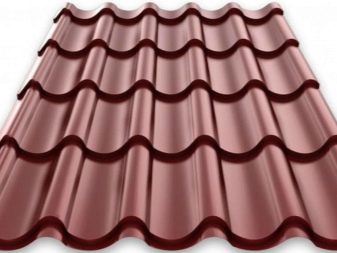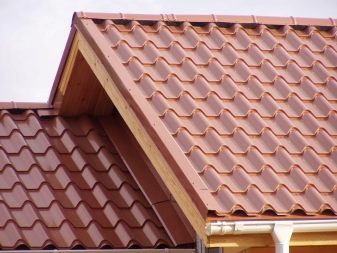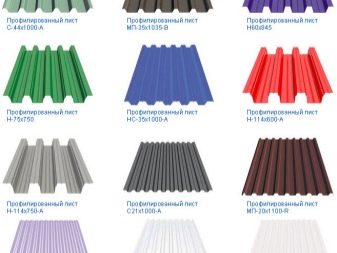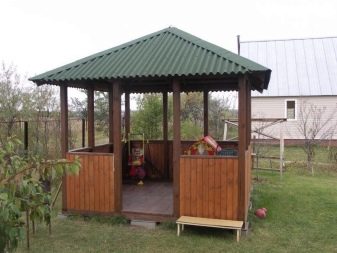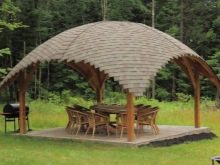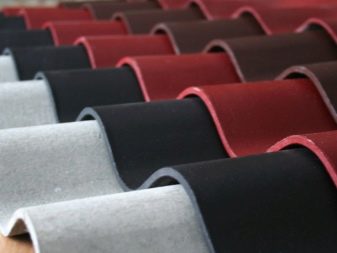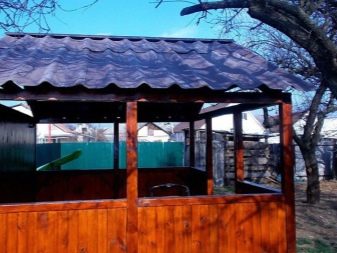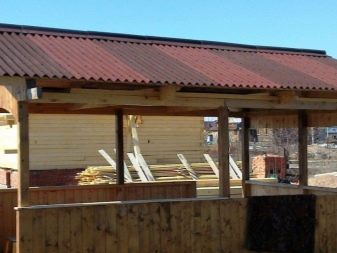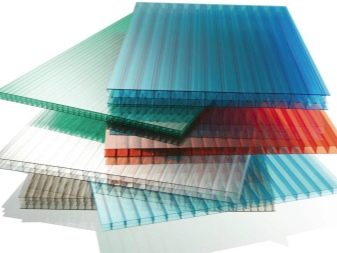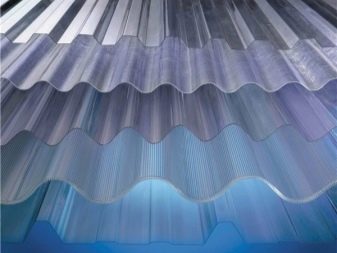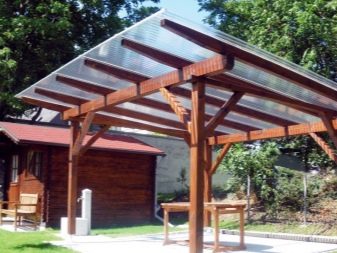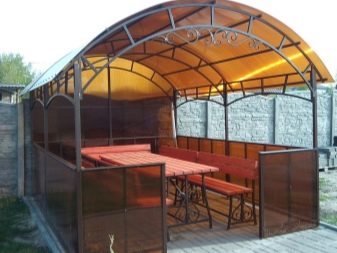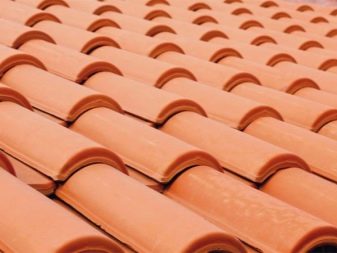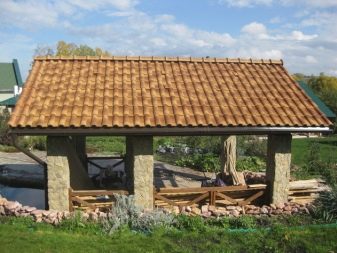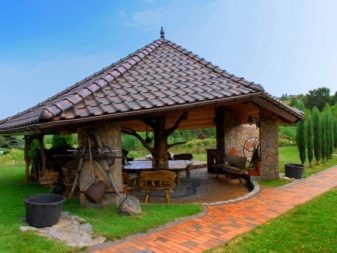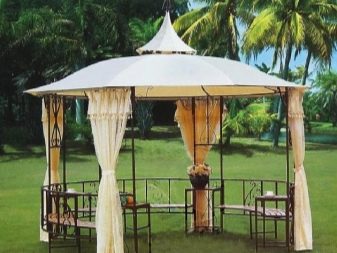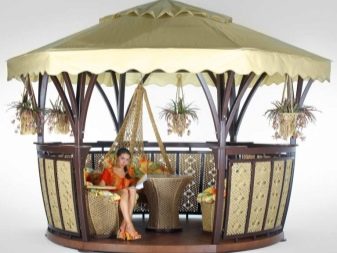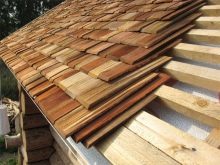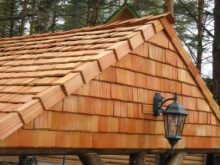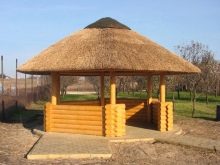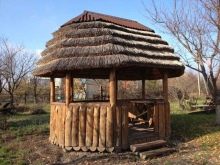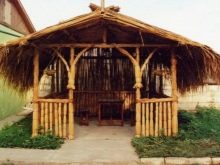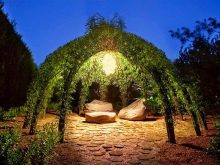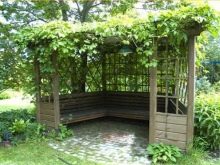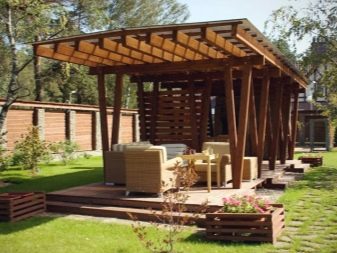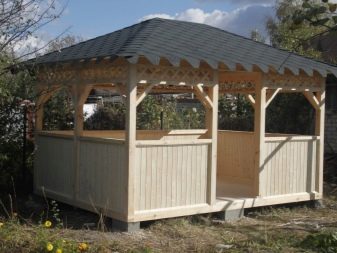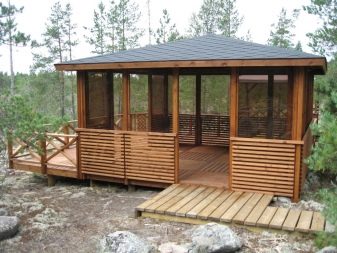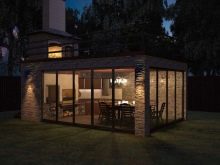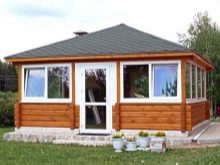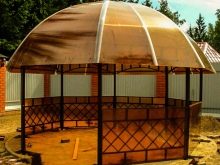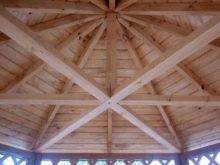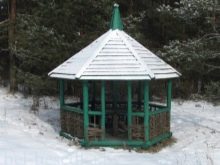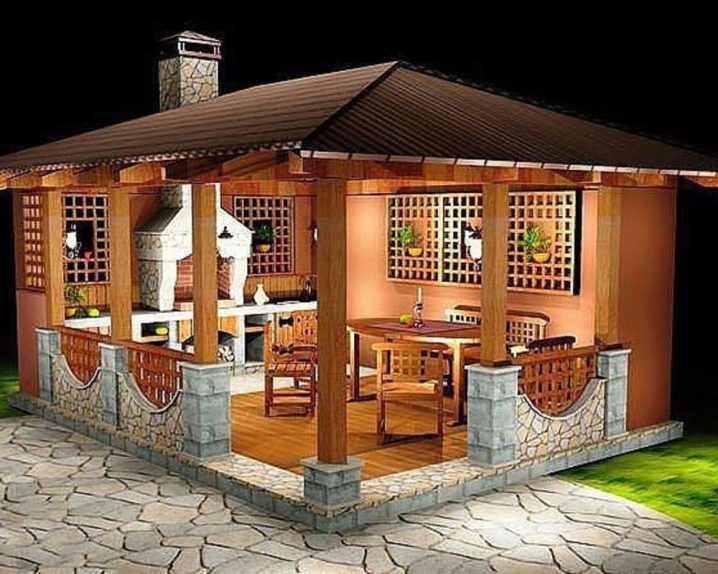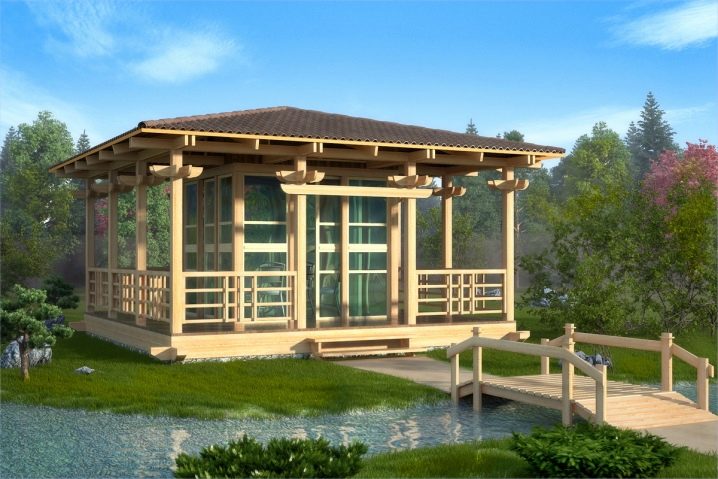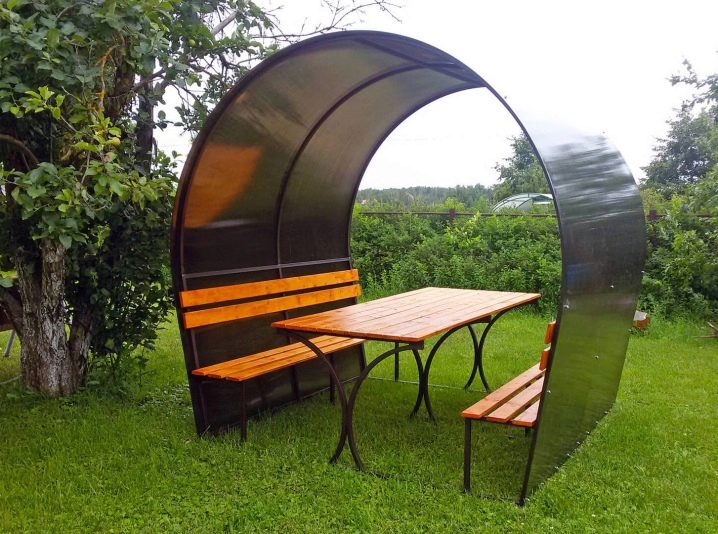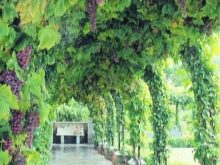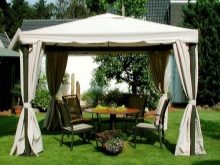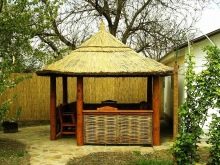What roof do arbor?
Starting from the May holidays to late autumn, many prefer to spend weekends and holidays in the open air. But if you need to hide from the scorching July sun, or vice versa, the cold September rain, a gazebo can come to the rescue. An integral part of such a structure is a roof, which can be made of various materials and in various forms.
Special features
When choosing a roof for the construction of an arbor on the site, it is necessary to take into account some features of the materials from which it will be made, and the weather conditions in the region, as well as the location of the building in the villa area.
When using lightweight materials for roofing, there will be no need to strengthen the walls and foundation. in order for them to bear such a weight. In humid climates and near the river and the lake, you must either choose a material with greater moisture resistance, or treat the usual material with water repellent. With a high level of precipitation in winter, a steeper slope should be made for even snow. For windy areas, it is better to choose a flatter roof. If a brazier or hearth is located under a canopy, the use of highly flammable materials such as wood, straw, reed should be avoided.
Types of roof structures
You can choose a roof for a gazebo, depending on which side of the building rain and snow falling on it will flow.
- Single bar - the simplest roof, which is made for gazebos with four corners, often without the involvement of professionals. The construction rests on opposite walls that differ in height, and therefore is tilted to one side. The angle of inclination and the side on which the roof will be inclined are chosen taking into account the direction of the wind that blows most often in this region. So the roof can protect even from slanting rain.
- Gable This type of roof is the most popular for rectangular gazebos and houses, it is easy to build with your own hands.In the case of a gable roof, you will have to choose what is more important: a normal gathering of snow or a wide view of the surrounding nature, since this depends on the slope and length of the slopes.
- Flat roof built much easier than any shed. In addition, the material consumption for such a roof is significantly lower than for any other type. It is stable under the gusts of even the strongest winds and is easy to connect to the roof of another building. However, if a large amount of snow falls in winter, it will accumulate on such a roof and can simply smash it.
- Hip. This chetyrehskatnaya roof, consisting of two triangles at the ends and two slopes in the form of trapezoids. Such a roof is made for both quadrangular arbors, and for complex polygonal. Such a roof is much more expensive than a gable, but it protects more effectively from rain and snow, keeps heat inside for a long time and does not require constant repairs.
Materials
The metal tile is considered the most popular material for the roof device. Sheets of this material are made of galvanized steel with a protective coating on top. It is lightweight and durable material that is easily and quickly mounted.The metal tile is resistant to the effects of the sun and rain, as well as to temperature extremes. A gazebo with such a roof looks especially good if the roof of the house itself also has a finish made from this material. The disadvantages of metal tiles are poor insulation, high material consumption and the risk of corrosion. The slope of the roof with such a coating should not be made less than 15 degrees to ensure the normal flow of snow.
The professional flooring (professional sheet) is similar to a metal tile, but is more economical material. Cold rolled steel sheets are protected by several layers of topcoat coating. This is a light material of various colors, having a relief in the form of trapezoids and waves imitating shingles. With ease of installation and corrosion resistance, professional flooring still has a couple of significant drawbacks. First, strong noise is guaranteed from raindrops hitting the roof like a metal tile. Secondly, the material is quite thin, so it heats up very quickly in sunny weather. In the warm season to be able to comfortably be in the gazebo, you must choose a place in the shade for it.
It looks good soft roof of bitumen tiles - plates of technical fiberglass impregnated with bitumen, which roll color granules. From below such a tile is covered with glued concrete and mounted on a pre-grid installed in advance. Sheets of this material are easily cut into pieces, so you can get from it the roofs of the most diverse design. The material is noiseless and durable, but has a fairly high price, and is also subject to deformation under the gusts of strong wind.
Quite often, the arbor on the site is covered with sheets of slate. With such a roof in the gazebo, you can arrange the brazier or hearth, it is durable and has a low price. However, slate is fragile, quite heavy and requires the installation of crates. It is not suitable for arranging spherical and complex roofs. Today, the so-called soft slate or ondulin is more popular.
The material is made by mixing cellulose fibers with minerals., after which it is impregnated with bitumen, which allows you to make ondulin easy and moisture-proof. The advantage of soft slate is the lack of noise during rain, corrosion resistance and low price.This flexible material can be used to decorate the roof of any shape and size on a pre-assembled crate in 0.6 m steps. However, in the gazebo, covered with ondulin, you cannot use open fire, as the material is combustible. In addition, this slate can fade in the sun.
A very popular material for the decoration of the roof gazebos is polycarbonate. From the transparent plastic sheets of polycarbonate, using a metal profile, you can mount not only the roof, but also the walls of the arbor. The material is durable, resistant to wind gusts and precipitation, light and flexible. Polycarbonate is also used for the construction of greenhouses, so on a hot day under such a roof will be quite hot. Under such a coating you can not put a brazier or barbecue, it is unstable to mechanical damage and requires a special coating to protect from exposure to direct sunlight.
Natural ceramic tile or cement-sand mixture is quite durable, but expensive materialwhich also has a lot of weight. At the same time the tile has the longest service life, is steady against various weather and temperature conditions, and its dot repair does not demand dismantle of all roof.This tile has a high noise and heat insulation, it is eco-friendly and has a very attractive appearance.
Nontraditional materials
The roof of the gazebo can be constructed from more unusual materials.
- the cloth most often used for the construction of temporary holiday tents and gazebos. Such material must be impregnated with water-repellent agents so that it does not let the sudden rain start.
- Wood shingle - This is a small thin boards, mounted on the batten overlapped, like tiles. This material is now quite popular in ethnic style.
- Reed, straw or reed mounted on a wooden crate and allow you to turn an ordinary arbor into a real bungalow. However, such a material, even after being treated with fire retardants, is still flammable, so it is not recommended to make a fire near such a roof.
- "Living Roof" formed from climbing plants that weave a metal honeycomb roof. This coating protects well on a hot day, but easily misses precipitation. Metal frame honeycombs look filled only in the summer, when the loach is covered with bright lush greenery.
Forms and sizes
The size of the gazebo is desirable to choose depending on the size of the site and its overall design. It should be combined in design with other structures.
Usually there are three options for arbors.
- Open gazebo - These are simple canopies and light rotudes, which are most often erected with your own hands. The design consists of several pillars with a small roof resting on them. The small size of the canopy allows you to place it even in the smallest areas, under fruit trees or near greenhouses and beds. It looks good arbor, twined ivy or wild grapes.
- Half-open gazebo - this is the same shed, but with sides around the perimeter. They can be open or curtained with special curtains or even glazed. These gazebos are well suited for a medium size site, since they are larger than a canopy or rotunda and require a fairly large, leveled area for construction.
- Closed gazebo - This is a small house of wood or brick, which has a full-fledged windows and a door. This gazebo can be heated and must be illuminated.Such houses are installed in large areas using a frame made of wood or metal. Inside can be placed as a small oven, and a full-fledged summer kitchen.
Among the whole variety of modern arbours there are several main forms:
- rectangular;
- polygonal
- round;
- combined.
However, there are more unusual forms. For example, a semicircular roof looks good and is easily mounted on a rectangular gazebo. Such a roof has arc-shaped slopes, from which snow easily melts, and water also does not stagnate on such a roof. For this option, any flexible material or one that consists of small fragments is suitable: shingles, polycarbonate, sheet steel, chips, or shingles. The semicircular roof can be either single-pitch or more complex structures that have several rounded slopes.
The six-sided roof can be well erected above a square or round arbor. Collect such a roof most often on the ground, and then in finished form is installed on the upper ring of the arbor. Cover the roof can be profiled or tile. Wooden slats will look good, but they can delay the flow of snow and water from the roof, so it is better to use moisture-resistant, non-corrosive materials.
The hip roof is one of the four-slope varieties. In contrast to the usual roof with slopes in the form of triangles and trapezoids, only a certain number of triangles are made that converge in the ridge knot. If you bend the edges of such a roof outwards, it will be better protected from wind and precipitation, and if inward, it will become similar to an oriental type roof.
The most difficult is a round or oval roof, which can be either spherical or more cone-shaped. Such a roof is mounted using a circular batten installed on the rafter rafters.
Beautiful design examples
Half-open gazebo with a hipped roof made of profiled sheet, inside of which there is a small summer kitchen.
The rectangular pergola of the combined type with a hip roof, stylized as Japanese architecture.
Canopy of carbonate in the form of a half-barrels, which is easy to put your own hands Simplicity and compactness of a design allow to place such canopy even on a small site.
The original gazebo or shed can be equipped with live plants, cloth or dry reeds.Such roofs are short-lived, but they look just amazing, so they are often used for weddings or other celebrations.
Instructions for the construction of a gazebo with a flat roof are clearly presented in the following video.
